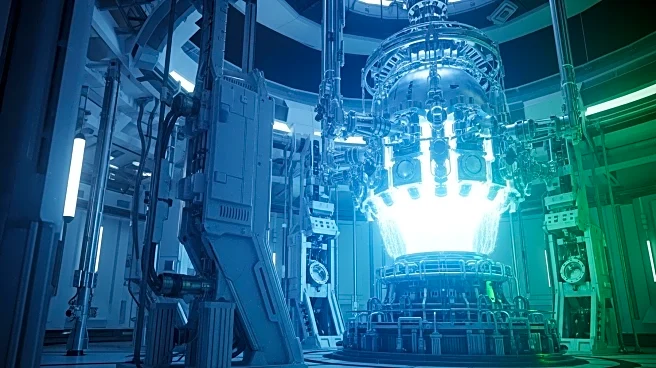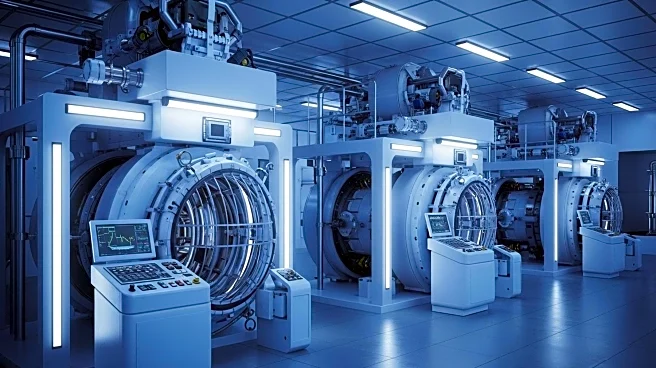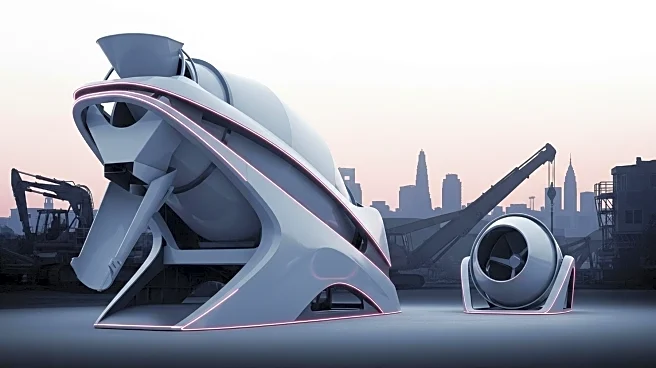What's Happening?
The U.S. Department of Energy (DOE) is backing the development of a new fusion reactor, Infinity Two, which aims to deliver 350 megawatts of electricity to the grid. This initiative is part of a broader effort to harness fusion energy, a long-sought goal for clean and sustainable power. The project is spearheaded by Type One Energy, which has completed an initial design review and is collaborating with the Tennessee Valley Authority (TVA) to explore the feasibility of a fusion power plant in the Tennessee Valley. The reactor design is based on stellarator technology, which uses twisted magnetic fields to confine plasma, potentially offering a more stable and continuous operation compared to traditional tokamak designs.
Why It's Important?
The development of a successful fusion reactor could revolutionize the energy sector by providing a carbon-free, reliable baseload power source. This would significantly reduce dependency on fossil fuels and mitigate exposure to commodity price fluctuations. The potential for fusion energy to address climate change by reducing greenhouse gas emissions is substantial. However, the project faces challenges, including proving the technology's viability at scale, securing regulatory approvals, and overcoming supply chain hurdles. If successful, the U.S. could lead in a new era of energy technology, impacting global energy markets and geopolitical dynamics.
What's Next?
The next steps for the Infinity Two project involve further engineering development, regulatory engagement, and securing investment for full-scale implementation. The collaboration with TVA indicates a strategic move towards integrating fusion energy into the existing energy infrastructure. Stakeholders, including government agencies, private investors, and environmental groups, will closely monitor the project's progress. The outcome could influence future energy policies and investment strategies, both domestically and internationally.
Beyond the Headlines
The ethical and environmental implications of fusion energy are profound. While offering a clean energy source, the technology must be developed responsibly to avoid potential risks associated with nuclear materials. The success of fusion energy could also shift cultural perceptions of nuclear power, traditionally viewed with skepticism due to safety concerns. Long-term, fusion energy could redefine energy independence and security, reducing geopolitical tensions over energy resources.












